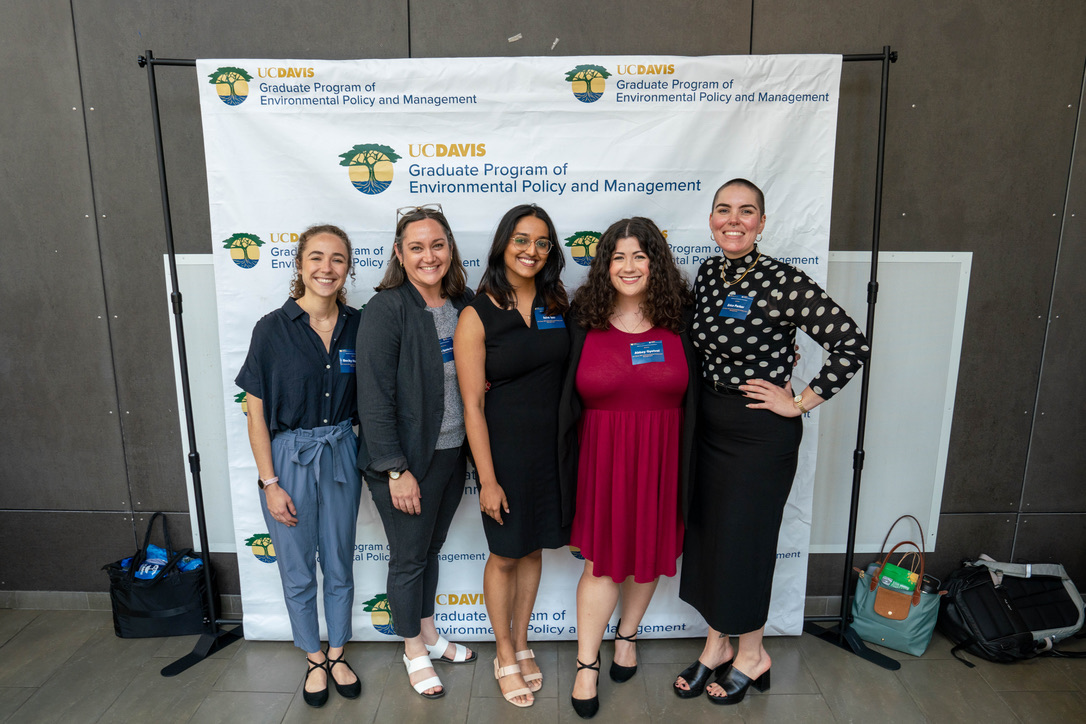
Climate Forward Cities
“As California goes, so goes the Nation.” California is the world's fourth-largest economy and remains at the forefront of environmental leadership. So, who carries out this key climate-related legislation across the state?
California’s 483 cities are tasked with implementing numerous statewide climate laws locally to help the state meet its ambitious climate goals. Despite their efforts to comply with these laws, do their part to reduce greenhouse gas emissions, and build climate resilience, cities are struggling. Keeping up with ever-changing requirements and increasing responsibilities is a significant challenge for cities with stretched budgets and limited staff capacity.
Our team of EPM graduate students worked with our client, the League of California Cities (Cal Cities), an advocacy organization representing California cities, to better understand climate-related program implementation across the state through survey-based research. We analyzed climate legislation in eight sectors, including air quality, CEQA, climate change, coastal resources and development, disaster preparedness, energy, solid waste and recycling, and water) to inform survey development. Seventy-six cities completed the survey, providing critical insight into implementation challenges at the local level. The results of our survey indicate that funding and staffing constraints, lack of coordination, and confusion over requirements are the major, cross-sector challenges that cities face statewide.
New laws are passed every year that renew, update, overhaul, or establish statewide goals that impact cities. Many jurisdictions, especially small and rural cities, cited lack of funding and limited staff capacity as major barriers to implementation, outreach, and enforcement of these laws. The lack of funding, coupled with increasing and ever-evolving responsibilities, means many cities are being asked to do more with less. Addressing staff capacity is critical, considering the continual growth of city-level responsibilities.
Cities also indicated that the lack of coordination among agencies is challenging and can take many forms. For example, some cities cited difficulties with managing overlapping jurisdictions, while others reported challenges with interagency communication and conflicting policies or priorities. Lack of coordination can also lead to duplicative work or inconsistencies within regions and across the state, making it difficult to assess local and state progress towards both individual and shared goals.
Remaining up-to-speed on new and updated requirements is another significant challenge for cities. Cities expressed that keeping staff adequately trained and up-to-date on requirements necessitates significant staff capacity. These challenges often perpetuate themselves and contribute to other barriers, resulting in staff overwhelm and turnover, and wasted time and resources. Therefore, ensuring cities are equipped with clear guidelines and the necessary tools, support, and resources is essential for meeting statewide climate goals and maintaining public trust.
Gaps in funding may be seen as cause for concern, as history has shown that funding gaps are often felt the most by residents and ratepayers. While significant investments have been made over recent years through climate bonds and state spending packages, securing stable funding for local governments is challenging, and some cities have no choice but to raise rates. Although climate bonds help fund large-scale infrastructure and resilience projects, cities often rely on competitive grants from these programs, which are not always granted equitably or predictably. Our survey results suggest that smaller cities may often lack the staff capacity or the technical expertise to apply for, manage, or financially match these grants. This both undermines long-term, stable investments and creates an uneven playing field, leading to patchwork implementation across the state and stifling progress towards meeting climate goals.
Achieving climate goals should not be contingent upon funding or put on the backs of ratepayers. Creative strategies to acquire funding and meet requirements, enhance regional collaboration, and drive advocacy efforts can help California achieve its ambitious climate goals. Cities can benefit from sharing experiences and information about projects and plans to better overcome common challenges. California cities are on the frontlines of climate change. From extreme heat and devastating wildfires to sea level rise, prolonged drought, and grid instability, cities are tasked with navigating an increasingly complex landscape of climate-related challenges that directly impact communities. At the same time, state legislation continues to set ambitious environmental and climate goals that cities are expected to implement locally, often with limited resources, capacity, or technical guidance. Based on the survey results, our team provided recommendations to our client to help their members achieve California’s ambitious climate goals effectively and equitably. Some recommendations include:
Consider staffing opportunities through AmeriCorps or other fellowship programs that provide capacity building support to local governments, while launching the careers of young professionals.
Resource pooling and innovative funding mechanisms to build local capacity.
Clear, streamlined, and aligned guidance and technical assistance from state oversight agencies.
Promote peer learning, transparent information sharing, & model ordinances through increased interactions and forums with Cal Cities member cities.
City staff wear many hats, and they have plenty to say. City perspectives and needs should be elevated in broader statewide climate planning conversations to create more strategic, inclusive, and aligned climate action across the state.

This article is the fifth in a series of six that highlight Policy Clinic projects completed by EPM masters students in collaboration with our partners. On behalf of the Graduate Program of Environmental Policy and Management, we'd like to give special thanks to Melissa Sparks-Kranz with CalCities for your partnership.
